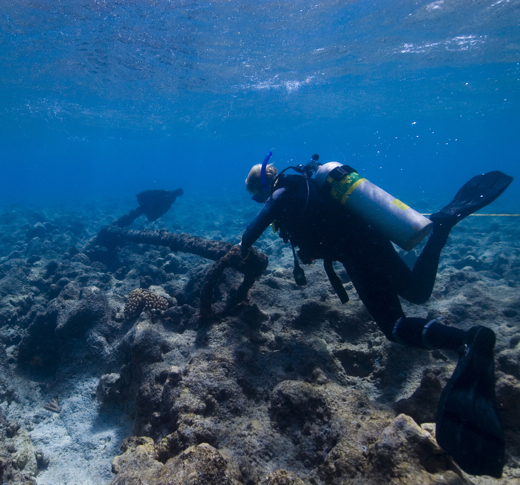 George Pollard Jr. was not a very lucky sea captain. In 1819, he became captain of the whaling ship Essex, out of Nantucket, Massachusetts, and headed for the Pacific Ocean. Just four days out, though, a storm struck and damaged the ship. Still, Pollard pressed on, rounding Cape Horn in January 1820 and then sailing north. Worse luck struck in November, when the ship was rammed twice by a large sperm whale. The Essex sank, and the crew piled into the small whaleboats with as
George Pollard Jr. was not a very lucky sea captain. In 1819, he became captain of the whaling ship Essex, out of Nantucket, Massachusetts, and headed for the Pacific Ocean. Just four days out, though, a storm struck and damaged the ship. Still, Pollard pressed on, rounding Cape Horn in January 1820 and then sailing north. Worse luck struck in November, when the ship was rammed twice by a large sperm whale. The Essex sank, and the crew piled into the small whaleboats with asmuch supplies as they could carry. It wasn’t enough, however—many men died and some had to resort to cannibalism to survive. The first mate wrote an account of the ordeal, and it inspired Herman Melville to write Moby Dick about Captain Ahab and his quest for the white whale.
When Pollard returned to Nantucket, he was given command of another whaling ship, the Two Brothers. And his back luck held. On the night of February 11, 1823, the ship struck a shallow reef off French Frigate Shoals, about 600 miles northwest of Hawaii. The crew members fared better that time, at least, and were rescued the next day by another Nantucket whaling ship. But Pollard’s career as a whaling captain was over. He made one trip on a merchant vessel and then spent the rest of his life as a night watchman, safe on dry ground in Nantucket.
 The Two Brothers remained hidden on the bottom of the sea until 2008 when marine scientists went on an expedition to the Northwestern Hawaiian Islands to study the marine life there. This area is part of the Papahānaumokuākea Marine National Monument, 140,000 square miles of protected ocean and one of the world’s largest protected areas.
The Two Brothers remained hidden on the bottom of the sea until 2008 when marine scientists went on an expedition to the Northwestern Hawaiian Islands to study the marine life there. This area is part of the Papahānaumokuākea Marine National Monument, 140,000 square miles of protected ocean and one of the world’s largest protected areas.Divers on the expedition first spotted a large anchor, the first clue that there might be some bigger find on the seafloor. Then they found other items, such as cast-iron pots, called trypots, of the type used to melt whale blubber, indicating that it wasn’t just any old wreck; marine archaeologists concluded that they had found a whaling ship.
Expeditions in 2009 and 2010 turned up items such as ceramics and glass that helped the scientists date the wreck, and first-hand accounts from sailors who had been on the Two Brothers approximately matched the location of the find. Now the scientists are ready to publicly conclude that the wreck was Captain Pollard’s ill-fated ship.
This is the first wrecked Nantucket whaling ship to ever be found, which is rather amazing considering how many hundreds of those ships were in existence during Nantucket’s whaling heyday in the 1700s and early 1800s, and how many must have sunk; whaling was never a safe occupation. “Shipwreck sites like this are important in helping tell the stories of the early days of sailing, including whaling and maritime activities both in the Pacific and around the world,” said Papahānaumokuākea Marine National Monument maritime archaeologist Kelly Gleason, who led the expedition.
By: Sarah Zielinski — Archaeology,History of Science,Oceans
----------------------
http://blogs.smithsonianmag.com/science/2011/02/marine-archaeologists-find-shipwreck-linked-to-moby-dick/
http://lebriciolediminerva.files.wordpress.com/2012/03/moby-dick3.jpg


No comments:
Post a Comment